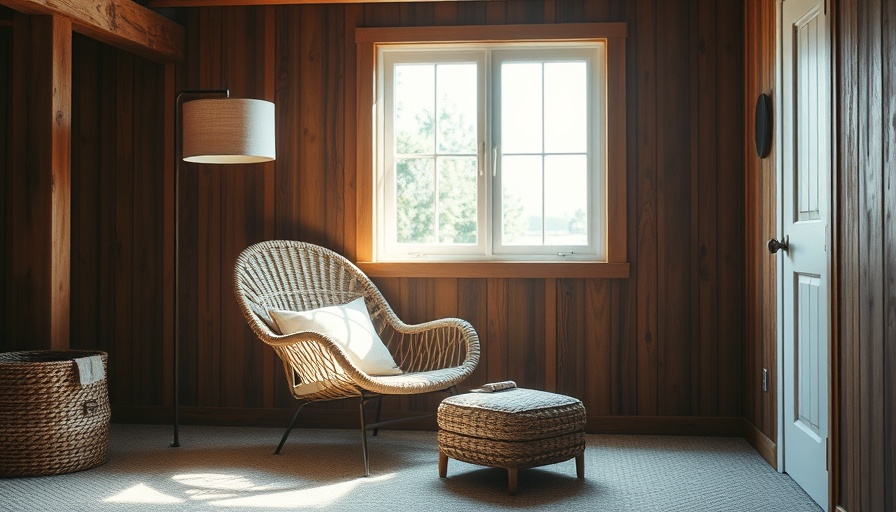
Illuminating Your Basement: The LED vs. Fluorescent Showdown
When it comes to lighting basements, the ongoing debate between LED and fluorescent lighting goes beyond brightness. For homeowners in Brooklyn, where basement spaces are often dark and damp, this discussion significantly impacts energy efficiency and costs. Choosing the right lighting can transform your basement—enhancing both its functionality and your overall energy footprint.
Why Energy Efficiency Matters in Basement Lighting
In a world where energy conservation is increasingly crucial, understanding how to effectively illuminate your basement can lead to significant savings. With basement lighting often treated as an afterthought, making an informed decision can result in lower energy bills and reduced greenhouse gas emissions.
The growing popularity of energy-efficient technologies, particularly LEDs, reflects a notable shift in consumer behavior. As more homeowners invest in basement renovations, the choice of lighting becomes paramount—not just for aesthetics but also for energy performance. This informs a larger conversation around the sustainability of home designs, especially in urban settings like Brooklyn, where energy costs can be higher.
The Lifespan Factor: LEDs Beat Fluorescents
When we look at lifespan, LEDs shine brighter. They can last anywhere from 15,000 to 50,000 hours compared to the 10,000 hours typical of fluorescent bulbs. This longer lifespan is more than a minor detail; it translates to fewer bulb replacements, resulting in reduced long-term costs and less waste in landfills.
This longevity also leads to a lower energy consumption over time, making LEDs a more sustainable option for homeowners dedicated to environmental stewardship. For those considering turning their basements into livable spaces, adopting this technology could save money and promote eco-friendliness.
Brightness and Quality: Which Is Better?
While brightness is often the most discussed aspect of lighting, the quality and type of light can make a significant difference in basement environments. LEDs provide instant illumination, making them perfect for activities that require clear visibility. In contrast, fluorescent lights can take time to reach full brightness and may produce a harsher, cooler light that some people find uninviting.
A well-lit basement can elevate its use, making it more suitable for activities ranging from family gatherings to home offices. Additionally, the decision to install lights that provide softer, warmer tones can make a significant difference in how inviting the space feels.
Environmental Impact: A Green Choice
As environmental consciousness grows, the impact of lighting choices on the planet has become increasingly relevant. LEDs, which often do not contain hazardous materials like mercury—common in fluorescents—present a compelling choice for the environmentally aware homeowner. This not only reduces potential pollution but also aligns with the growing trend toward sustainability.
Moreover, the lower energy consumption of LEDs contributes to decreased power plant emissions, as well as lower dependence on fossil fuels. Homeowners who choose energy-efficient lighting options contribute positively to their environment while enhancing the comfort of their homes.
Financial Considerations: Short-Term vs. Long-Term Costs
The upfront cost of LED lights is generally higher than fluorescent bulbs, which can deter some homeowners. However, looking at the long-term perspective is essential. Over time, the savings accrued from lower energy bills and fewer replacements can far exceed the initial investment.
Furthermore, many utility companies offer rebates for energy-efficient lighting installations, which can help offset upfront costs. It’s worth investigating local programs that can make LED lighting even more economical.
Final Thoughts: Making the Right Choice for Your Basement
Your basement’s lighting is more than just a necessity; it plays a crucial role in how the space is perceived and used. When choosing between LED and fluorescent options, consider both the financial implications and the environmental impact of your decision. LEDs offer clear benefits in longevity, energy savings, and environmental friendliness, setting them apart from traditional fluorescent options.
In conclusion, the choice of lighting in your basement can enhance your home’s functionality while significantly impacting your energy expenses and environmental footprint. As energy efficiency becomes increasingly vital, embracing LED technology could be one of the best home improvements you make.
Call to Action: Transform your basement and save!
Explore various LED lighting options available for basements and ensure that your home is both well-lit and energy-efficient. Invest in your home today for a brighter and greener tomorrow.
 Add Row
Add Row  Add
Add 




Write A Comment